Exploring early brain development in real-world settings: an interview with Dr. Paola Pinti
In this interview, we talked about her experience and her work in the ToddlerLab at the Centre for Brain and Cognitive Development (CBCD), Birkbeck University in London. Additionally, we will discuss her usage of a multimodal set-up (which includes the Brite) to investigate the brain and behavior of pre-school children.
Could you please introduce yourself, tell us about your research background and focus, and your experience with NIRS?
My name is Paola Pinti, I am a biomedical engineer. I did my PhD in functional neuroimaging with NIRS and currently have been using the technology for almost 10 years. My focus lays on the technical side of fNIRS experiments including, next to experimental set-up, developing algorithms, signal processing, analysis methods and understanding limitations of the technology.
Since the implementation of wearable and wireless devices, I also investigate the performance of experiments outside of the common lab set-up, associated challenges and how to overcome those. Additionally, I recently started working on the integration of NIRS with other technologies, such as EEG, motion tracking or monitoring of sub-systemic physiology (heart rate) so that we can use that data to get a better understanding of what happens in the brain.
A couple of years ago, I started working at the ToddlerLab of Birkbeck University, a brand-new facility designed to study brain development in toddlers and preschoolers aged from 3 to 6 years. The special thing is that the labs mimic real-world scenarios, including labs designed as classroom and living room. The facility also contains a Cave Automatic Virtual Environment (CAVE) lab which can create any desired setting while the children can move around wearing a multimodal set-up. The whole idea is to test children in real-world scenarios where they can move freely, as it is challenging to do experiments with children in this age range in typical neuroimaging set-ups. This limitation led to a gap in literature for children of this age range.
Multimodal set-up in the ToddlerLab, including the Brite fNIRS device and cloths for motion tracking.
Would you say the biggest advantage of wearable devices, such as the Brite, for the ToddlerLab is that it allows for free movement?
Exactly, it is important that the children can move around without restraints. It is extremely difficult to ask children of this age range to sit down and stay still in an MRI scan or when wearing a stationary fNIRS device. Based on the first study results the wearable set-up is well tolerated. With some playful skills and tricks, for example telling them “This is an astronaut cap and we will play some cool games”, all children agreed on putting them on. The fact that children can freely move around with wearable devices additionally gives us the freedom to design tasks and experiments that are more interesting and engaging. The children do not complain about comfort, they even forget they are wearing the cap.
Which measurements are included in the multimodal set-up?
At the moment, we are running studies in the ToddlerLab and the baby lab of CBCD that include fNIRS, EEG and eye-tracking. One, for instance, we called “fNIRS house”. The children need to create a Duplo-house for a Duplo character called Bob. One PhD student, Lisanne Schröer, has designed this experiment to investigate executive function in children while they plan actions. The children are wearing clothes with markers to track their motions. Simultaneously, we are measuring fNIRS using two Brite systems on the prefrontal and motor cortex in both hemispheres. We are planning on applying a similar set-up for a new project looking into collaborative problem solving in children. While performing tasks together in groups, fNIRS, EEG, motion tracking and physiological parameters, such as heart rate, will be measured. We are going to monitor the children over six months to see how their brain-to-brain connectivity or coupling changes as they become more familiar with each other.
Another research that is happening in the baby lab is a sleep study. A colleague of mine, Louisa Gossé, is using the BabyBrite fNIRS and EEG on sleeping babies of 6 to 8 months. The infants perform tasks before and after sleep and we are checking the effect of sleep on the task performance.
Back in the ToddlerLab, in our Cave, we use eye-tracking as well. We designed toddler-sized glasses integrating a headset with wearable eye-tracking and shutter glasses for 3D vision.
The “fNIRS house”study with the mission to build a Duplo house for Duplo-figure Bob and assess executive function of pre-school children.
Could you tell us a bit more about the CAVE lab and what makes it so special?
The CAVE is an immersive environment room which can project any 3D virtual setting, such as a playground, to the side walls, front walls and the floor. We can use the multimodal set-up to interact with the VR environment. For instance, we can perform movement and eye tracking, while children pop virtual bubbles. Additionally, one of our postdoc’s, Chiara Bulgarelli, plans on using the NIRS signals in real-time for the children to interact with a social avatar, designed as BCI experiment to investigate empathy. The fNIRS signals acquired with the Brite is streamed in real-time with Lab Streaming Layer (LSL) to Unity, the software that controls the avatar. Based on the amplitude and sudden features extracted from the signals the avatar would be behaving differently. For me, it is very convenient that the Brite supports LSL to integrate the data with other measurements and to stream the data out to other software programs.
“We would like to thank Dr. Paola Pinti for taking her time to share her fascinating research insights in the Birkbeck Toddler Lab with us.”
Dr. Paola Pinti acquired a PhD in functional neuroimaging using fNIRS and has multiple years of experience applying NIRS on adult, pediatric and infant subjects. Currently, she is working at the ToddlerLab at Birkbeck University of London.




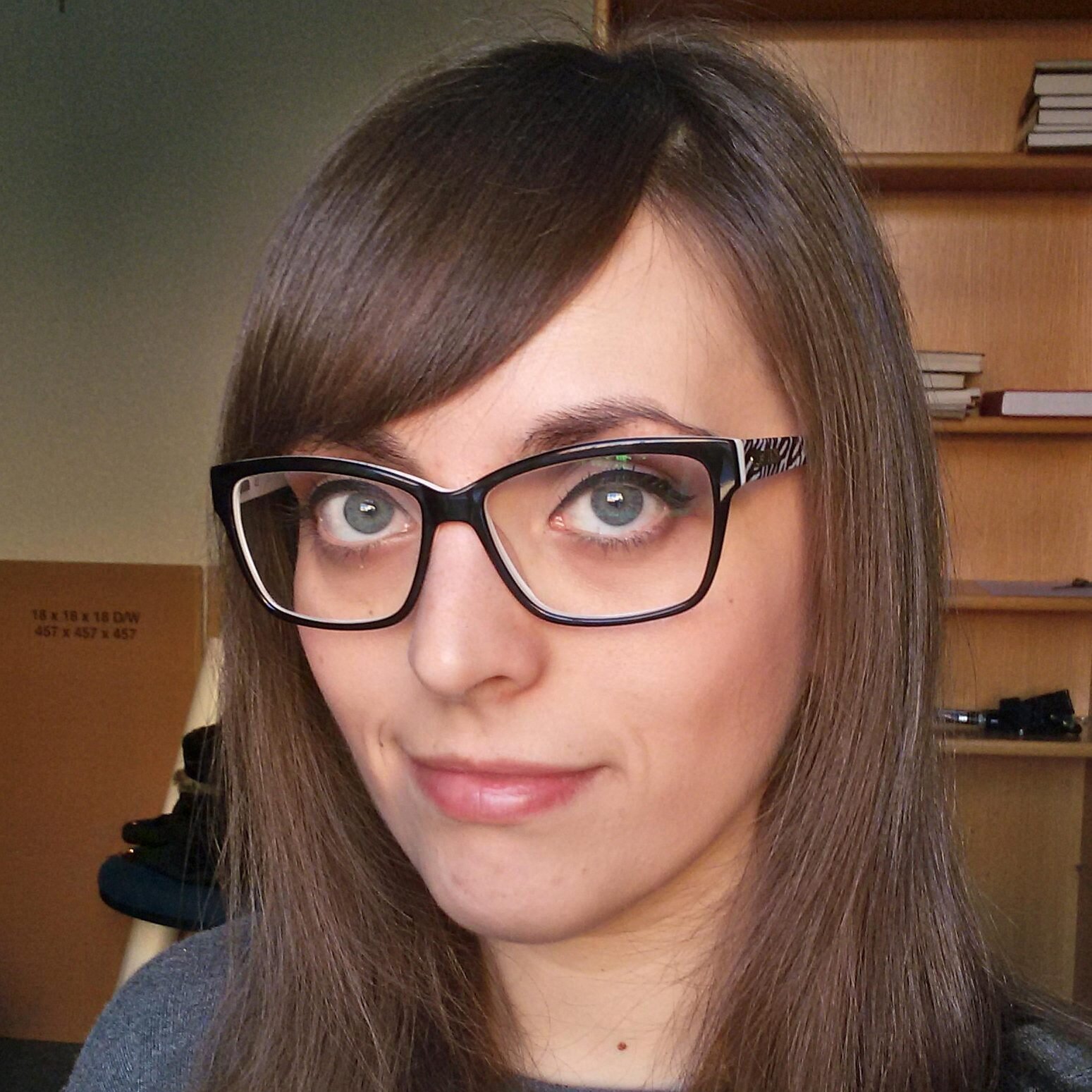
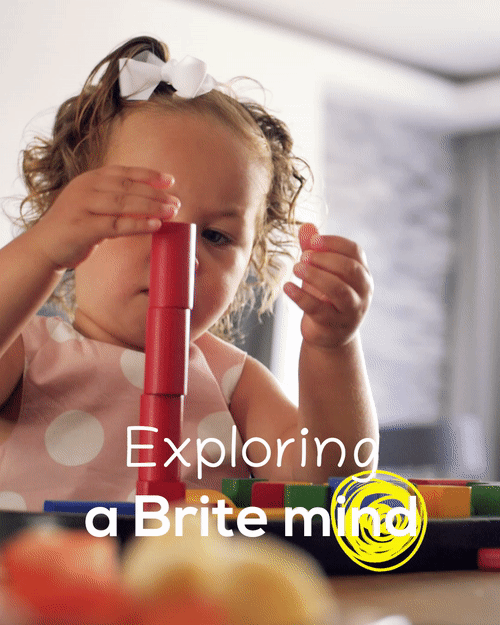
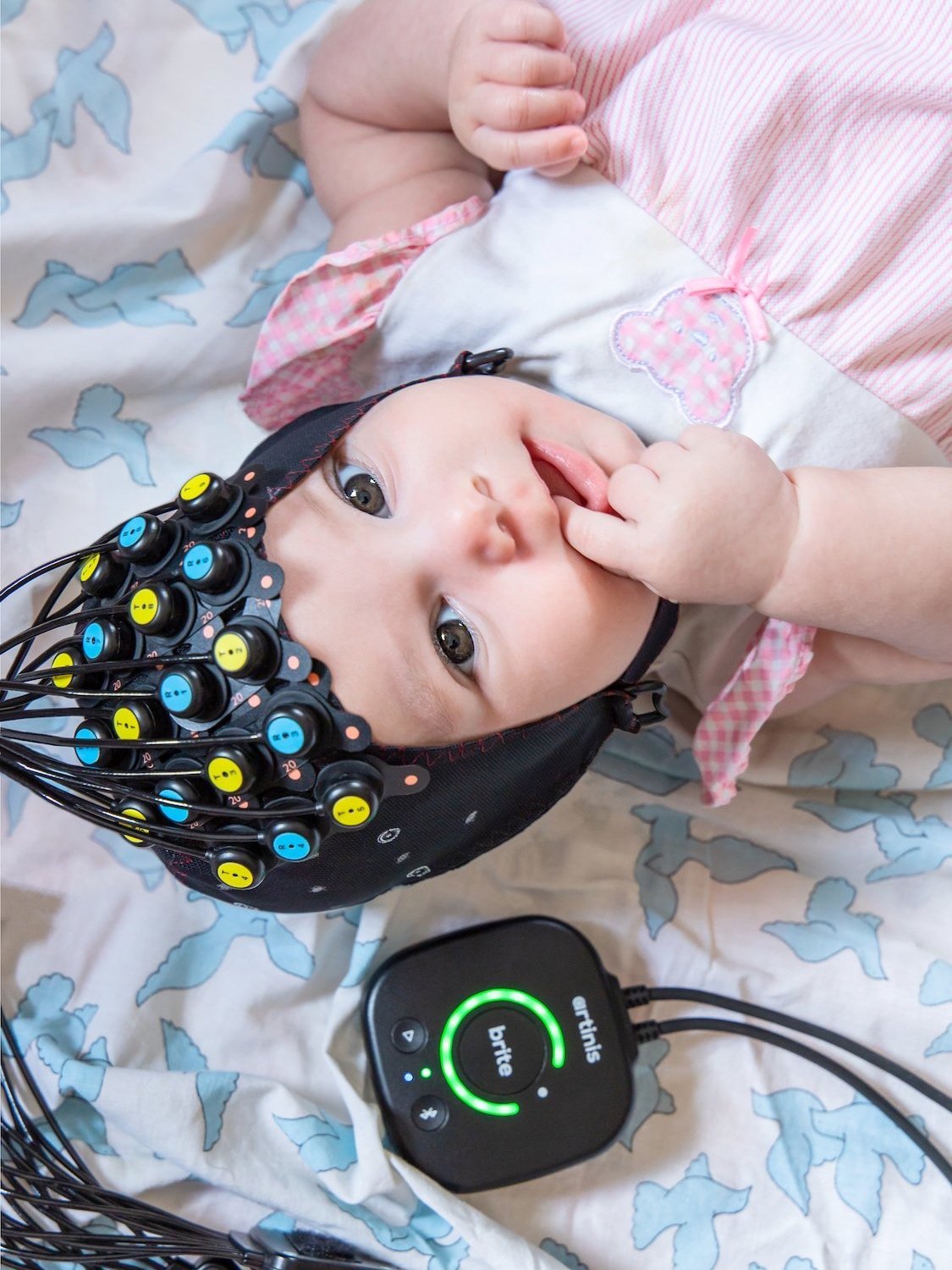
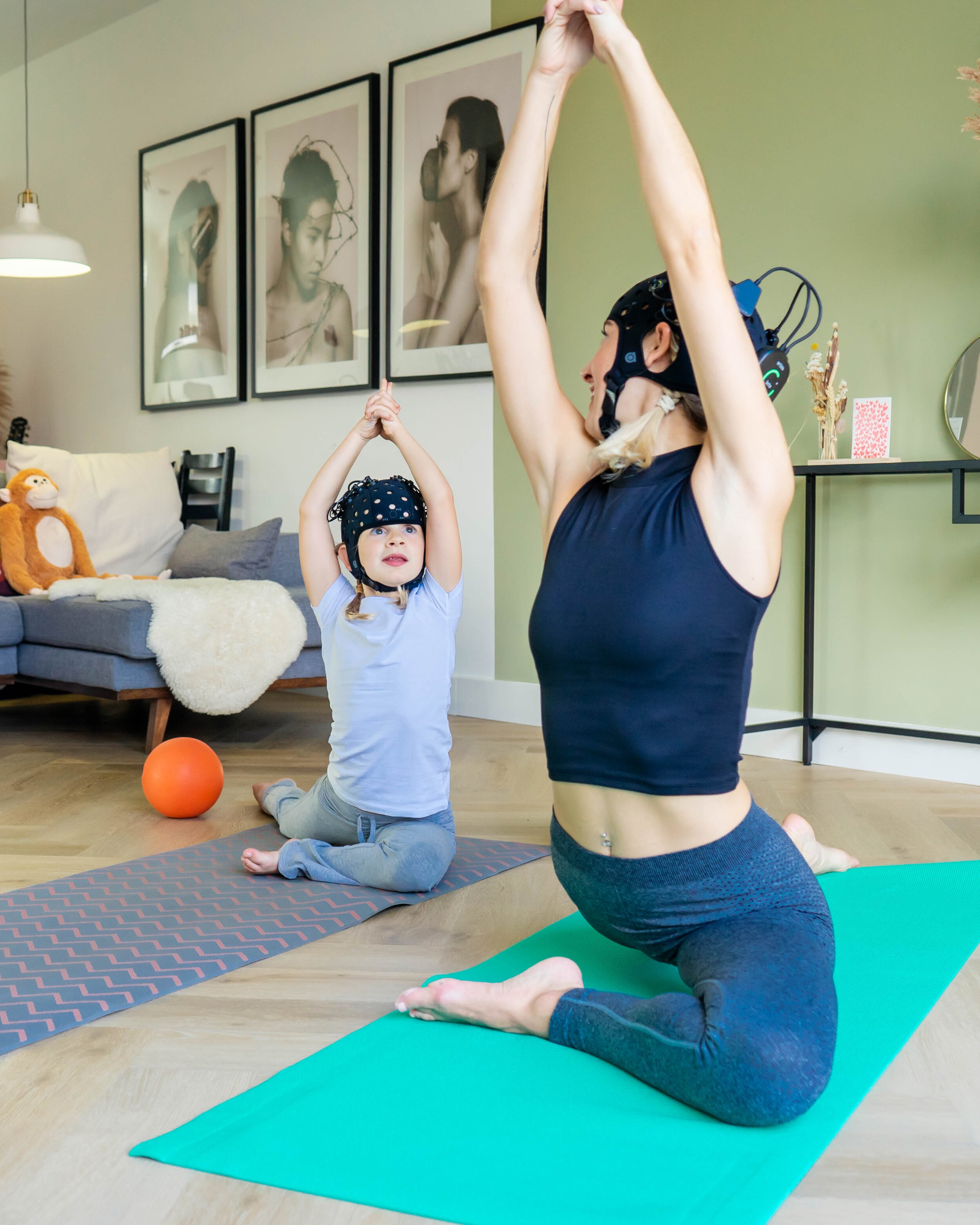
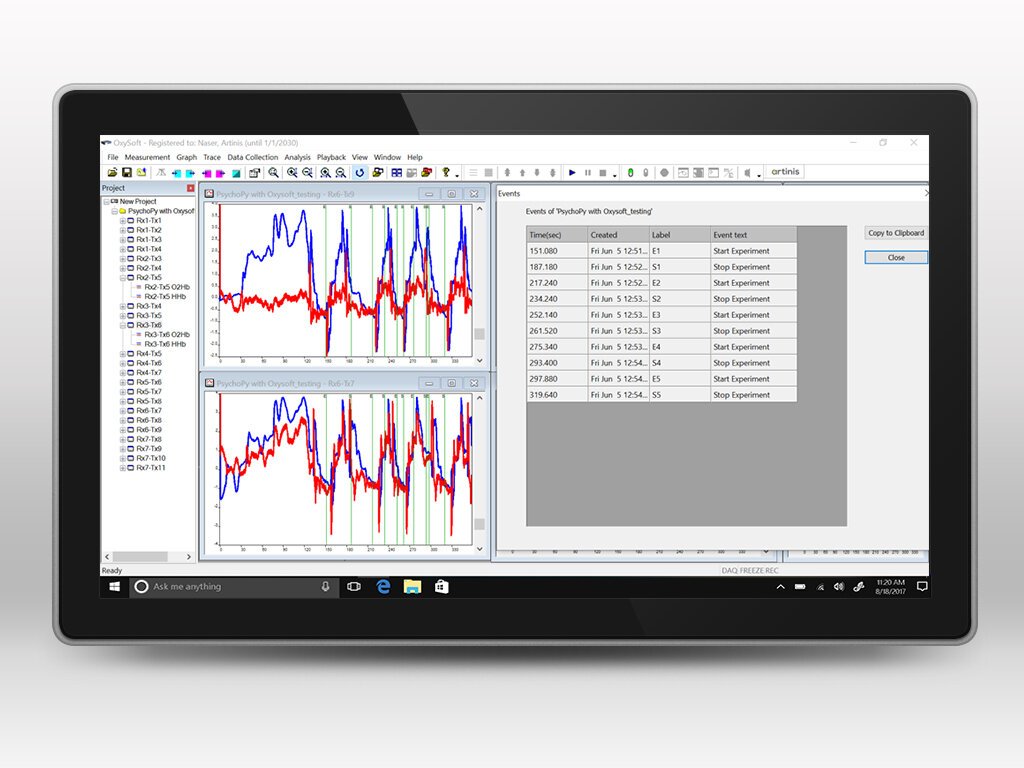

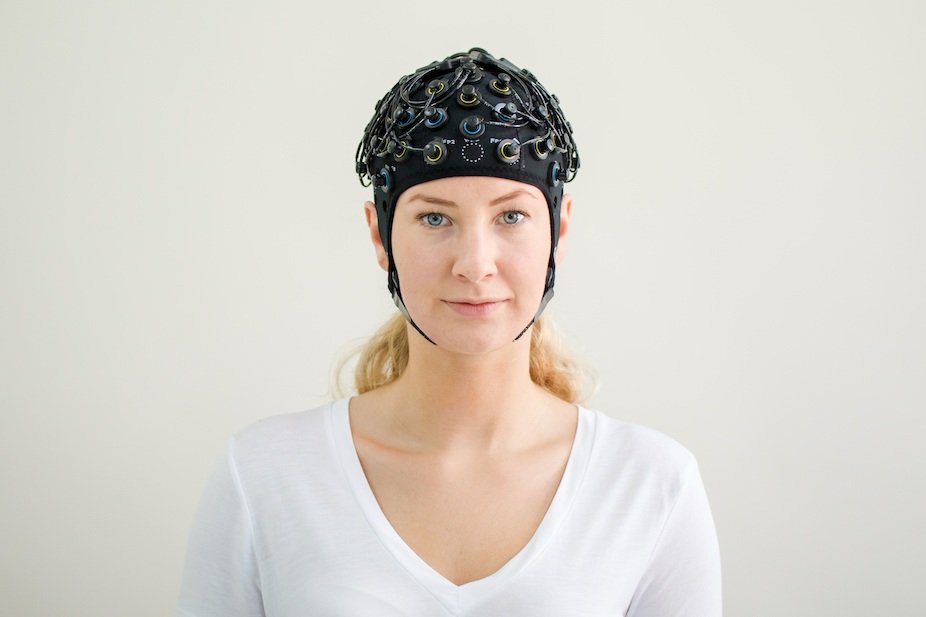

Dr. Paola Pinti is a Senior Research Laboratory Developer in the Birkbeck ToddlerLab. In this interview, she shares her experience in neuroscience, her work in the ToddlerLab, and the usage of a multimodal set-up to investigate behavior and brain of preschool children.